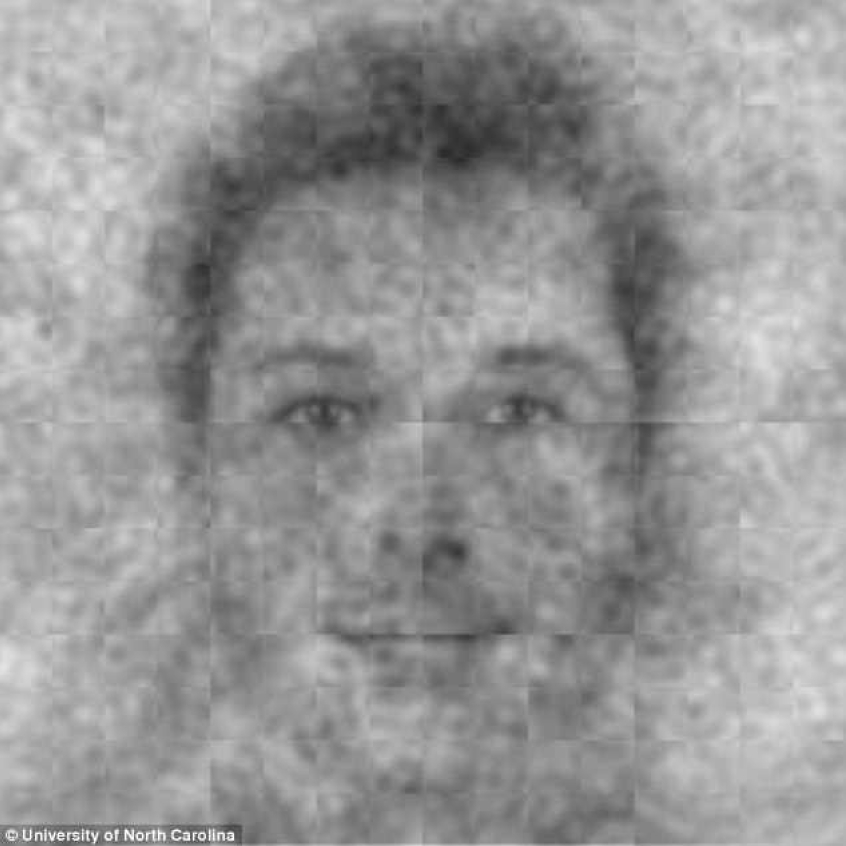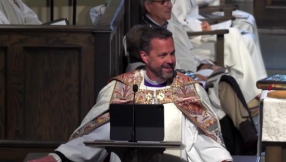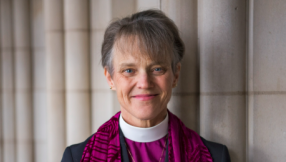What if God was one of us? Just a soft-featured, Caucasian male like one of us? Or had a striking resemblance to Chris Pratt? In a recent study by the University of North Carolina, Chapel Hill, researchers showed 551 Americans hundreds of different pairs of faces and, asking which looked more like 'the face of God', produced a composite mugshot: young, male, with an enigmatic smile, and hey, wasn't he in Guardians of the Galaxy?
They found that, indeed, we tend to believe that God looks like us in terms of attractiveness, age and race (though both women and men imagine God as male). The study also found that people bring their politics, not just their demographics, to bear on their view of God: liberals saw God as relatively more feminine, more African American, and more loving whereas conservatives saw God as older, more intelligent, and more powerful.

In some ways, this is hardly news: pictures of Jesus from different countries around the world represent Him with the ethnicity and dress of that particular culture. We in the West are all too familiar with images of Jesus as light-haired, blue-eyed and white. But down through the ages, people have shown the same tendency to depict Jesus in a way that makes him feel accessible. None of that gives God an identity crisis: I am continually moved by hearing of God meeting people where they are, and speaking to them in a language they understand. But, nevertheless, I think creating God in our image is a tendency we need to check. How we relate to God and to others is, I believe, at stake.
Catching a glimpse of God is a recurring theme throughout the Bible. On one hand, he is continually making himself known, appearing in visions and dreams, through angels, in the smoking oven and flaming torch that moves through the animal sacrifices made by Abraham, in the pillar of smoke that leads the Israelites, and ultimately in Jesus, who says 'anyone who has seen me has seen the Father'.
Yet on the other hand, God, even in the New Testament, is described as invisible, a spirit 'whom no man has seen or can see' (1 Timothy 1:17, 6:16). Moses is said to have seen the back of God, not his face, and Isaiah says he 'saw the Lord sitting on a throne, lofty and exalted' (Isaiah 6:1) yet Jesus says 'no one has seen the Father, except the One who is from God' (John 6:46). So, which one is it: visible or not? Seen or unseen? At the very least, these verses suggest we should be cautious about assuming our picture of God is a correct and comprehensive one.
List some images used to describe God in the Bible. Father? King? Light? Shepherd? Lord? I imagine a woman in childbirth (Isaiah 42:14), a fresh spring (Jeremiah 17:13), a lioness and a bear robbed of her cubs (Hosea 13:8) were lower down your list. God is wildly creative when it comes to how he identifies himself – sometimes using male metaphors and other times female, sometimes as an animal, and occasionally not animate at all. He speaks through the most unlikely media: from Balaam's donkey to a burning bush to the fingers of a human hand writing on King Belshazzar's palace wall. It is almost as if God is too expressive, his voice continually spilling over the familiar channels of communication to remind us that there is nothing in the universe which cannot serve as a canvas on which he can paint, or a megaphone through which he can speak. He is utterly uncontainable. One image of God is simply not enough.
Our tendency to build God in our image reveals something of our pride and our fear. Could God love me if he looks like them? We want to be sure of being in God's family and so sometimes we mentally imagine him in ours – whether that's ethnic, political, theological or social. But the reality is that the way that humans reflect God's image is as a whole: one person, or even one subset, alone (with the exception of Jesus) cannot clearly and fully reflect God's character. We are one puzzle piece in a jigsaw.
Seeing God, then, means having the humility to let each and every person point us to something about God's character that we would otherwise miss. That means we should always be open to being surprised. After all, as the writer of Hebrews put it: 'Do not forget to show hospitality to strangers. For by doing so, some have shown hospitality to angels without knowing it.' Whether it was turning up at Abraham's tent as three strangers, wrestling with Jacob as an anonymous man, or, in Jesus, defying everyone's assumptions about what the Messiah would look like, God's appearances never conform to our expectations.
Having an expansive view of God is crucial for our spiritual growth: for if our aim is to grow in godliness, and God's character is as rich and multi-faceted as all the metaphors used of him in the Bible suggest, then so might he seek to shape us in unexpected ways. And finally, we cannot forget that although we will one day see God face to face, it is we who are in the meantime meant to image God. 'No one has seen God at any time; but if we love one another, God abides in us, and his love is perfected in us', John wrote in his first epistle.
When the UNC Chapel Hill researchers asked 'if God had a face, what would it look like?' the answer should have been, 'the church' – specifically in the acts of love by the people of the Church from every century, ethnicity, gender, age and class. We are all hungry to see more of God. But to do so, we need to stop looking in the mirror and start looking into the face of the stranger.
Florence Gildea is a writer and researcher.













